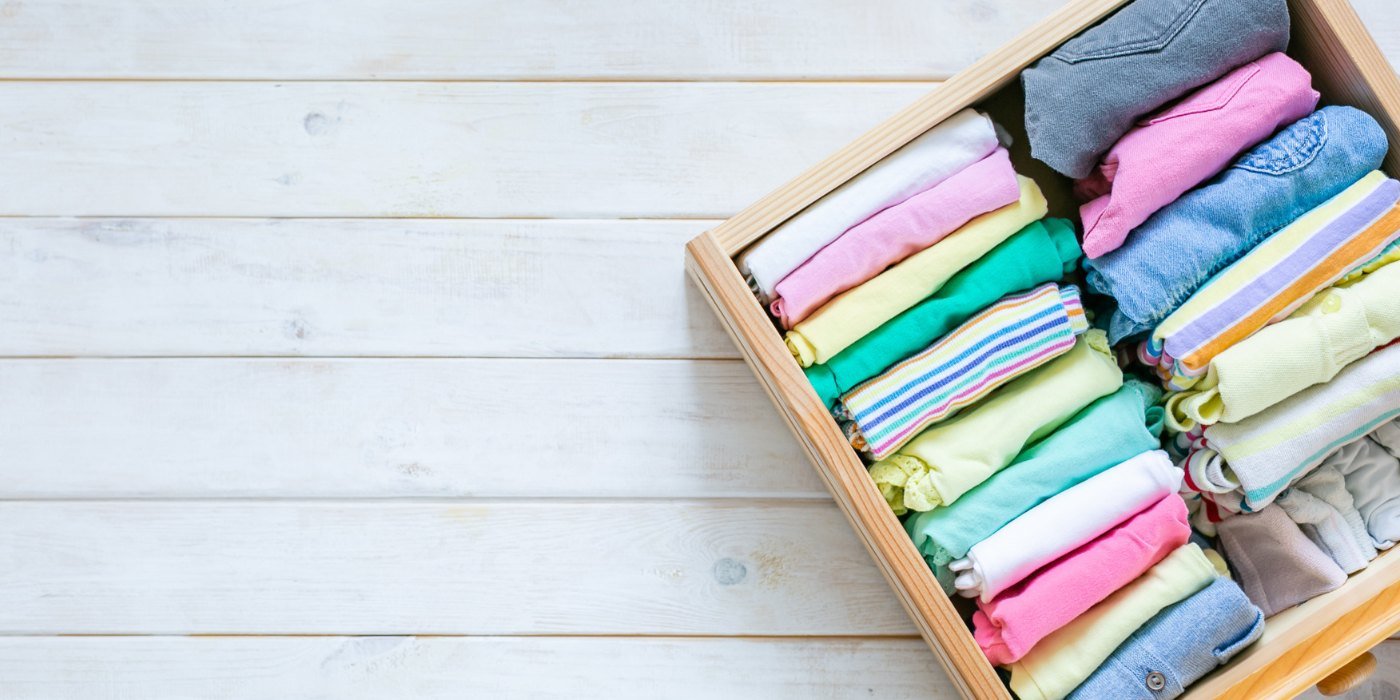
Marie Kondo
The KonMari Method®
KonMari is a lifestyle brand founded by Marie Kondo. She is the bestselling author of The Life-Changing Magic of Tidying Up and creator of the KonMari Method® of tidying. The KonMari Method® started with just four words: Does it spark joy?
Rooted in Japanese philosophy, this is the experience of the life-changing magic of the KonMari Method® by being mindful, introspective, and optimistic.
The goal of the KonMari Method® is to inspire you to choose joy and help you continuously create your ideal life, or kurashi. By repeatedly asking yourself what sparks joy and what doesn’t you begin to surround yourself with the people and things that matter most. We believe that organization is self-care and when you choose joy you are choosing a more fulfilled life.
What is KonMari?
The KonMari Method® is a simple but effective tidying method, created by Marie Kondo, that ensures you will never again relapse to clutter. It uses a unique selection criterion – choosing what sparks joy! You are not choosing what to discard but to keep only the items that speak to your heart. Through tidying, you can reset your life and spend the rest of your life surrounded by the people and things that you love the most.
The owners of The Uncluttered Life, Inc. hold the distinction of Certified Master KonMari Consultant. This is the highest distinction a consultant can achieve.
A Certified KonMari Consultant is exclusively and uniquely trained to transform your life through tidying and organization. At The Uncluttered Life, Inc., we work with purpose and an incredible amount of know-how, using joy to help you live your best life!
What is the KonMari Method®?
-
Clothing
Begin by gathering ALL clothing category items into one pile! Make sure you have gathered every piece of clothing and be sure to handle each one.It is recommended that you divide your clothing into the following subcategories. As you do, go through the joy-check and discard processes.
Have your trash bags, sticky notes and/or temporary storage boxes on hand.
Divide the items into the following categories:
-Tops (shirts, sweaters, etc.)
-Bottoms (pants, skirts, etc.)
-Clothes that should be hung instead of folded
-Socks
-Underwear
-Sleepwear
-Bags (handbags, clutches, tote bags, etc.)
-Accessories (scarves, belts, hats, etc.)
-Clothes for specific occasions (swimsuits, saris, gowns, sportswear, uniforms, etc.)
-Shoes -
Books
Begin by taking all books off the shelves and piling them on the floor. This is the best way to sort through the joy-check process.Do not skip this step, and do not start reading your books! This will stop the process before it starts.
Divide your books into four categories:
-General (books you read for pleasure)
-Practical (reference, cookbooks, educational, etc.)
-Visual (photograph collections, coffee table books, art books, etc.)
-Magazines -
Papers
The KonMari® Method suggests discarding all paper. You, ultimately, need to make the decision about what to keep. However, she recommends you dispose of anything that does not fall into one of the three categories below:-Currently in use
-Needed for a limited period (invoices/bills, documents/forms, warranties, etc.)
-Must be kept indefinitely or for a specific period (taxes, insurance, legal documents) -
Komono
Preparation for Komono:Have lots of small empty boxes ready, which include boxes in all shapes and sizes for your drawers. This will be temporary storage as you determine what you need.
After joy-checking all the komono subcategories, you can put things back into these small boxes in an organized fashion.
-CDs, DVDs
-Skin care products
-Makeup/cosmetics
-Accessories
-Valuables (passports, credit cards, etc.)
-Electrical equipment and appliances (electric cords, etc.)
-Household equipment (stationery, writing materials, etc.)
-Household supplies (medicine, detergents, etc.)
-Other (spare change, keys, décor, etc.)
-Optional (hobby-related supplies/equipment)Kitchen Komono Items By Category
Tools for Cooking:
-Cooking tools (pots, frying pans, bowls, colanders, etc.)
-Cooking utensils (knives, ladles, spatulas, cooking spoons, etc.)
-Electric cookware (food storage, jars, bottles, etc.)
-Wraps (plastic wrap, aluminum foil, food storage bags, etc.)
-Small items (rubber bands, toothpicks, etc.)
-Paper goods (paper plates, straws, paper cups, etc.)
-Lunchbox items
-Baking tools (baking sheets, cupcake pans, whisks, measuring cups and spoons)
-Cleaning detergents (dishwashing detergent, cleansers, etc.)
-Cleaning tools (sponges, cleaning brushes, etc.)Tools for Eating:
-Dishware, ceramics and serving pieces
-Tableware (cutlery and glassware)
-Tablecloths, placemats, napkins, coasters, etc.
-Cups and mugsFood and Pantry Items:
-Spices
-Dry goods
-Canned or packaged foods
-Drinks
-Vitamin supplements
-Snacks, bread, etc.
-Staples (rice, noodles, pasta, flour, etc.)
-Teas, coffee, etc.
-Condiments, sauces and preserves/jams -
Sentimental Items
By the time you reach this final stage of your tidying festival, you have sufficiently honed your sensitivity to what sparks joy for you. Make good use of the things you choose to keep for the next stage of your life. Ask yourself, “Will the future me need this to spark joy?” and confront each item to put your past self in order:-Awards, certificates, diplomas, yearbooks, trophies, medals, etc.
-Artwork (including children’s)
-Relics and keepsakes
-Letters
-Photos
-Journals and scrapbooks
-Dolls and stuffed animals
-Photos
-Journals and scrapbooks
KonMari Method® Sorting Categories
“Truly precious memories will never vanish even if you discard the objects associated with them. By handling each sentimental item and deciding what to discard, you process your past. To put your things in order means to put your past in order, too.”
Marie Kondo




